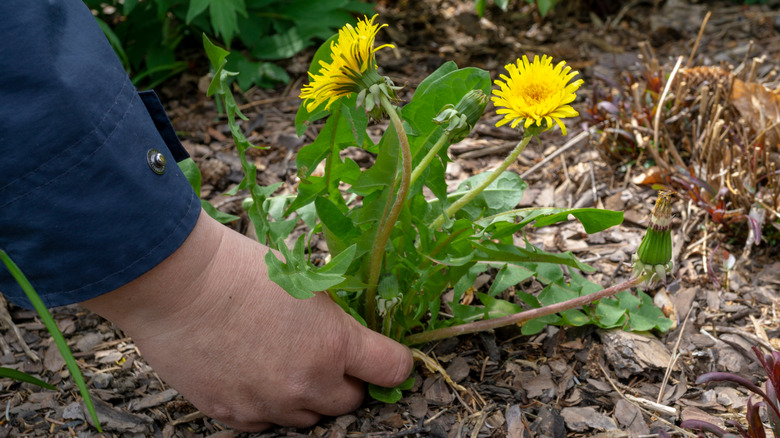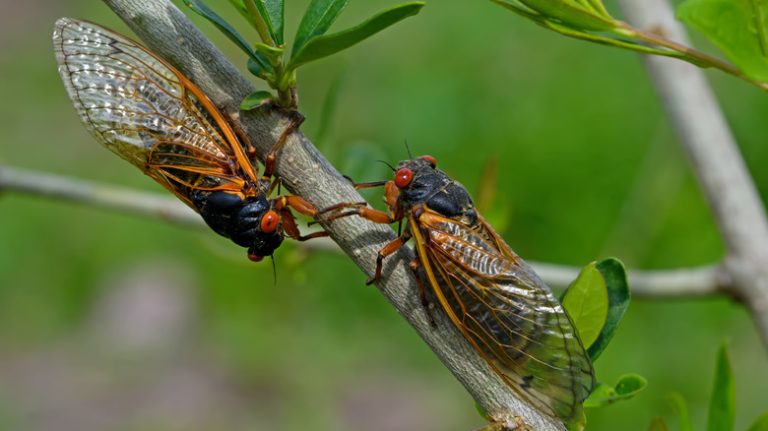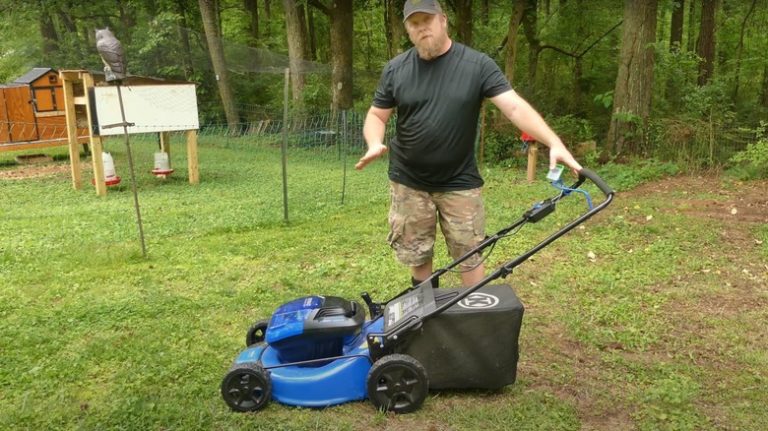Dandelions (taraxacum officinale) are a very common wild-growing perennial flower that starts with bright yellow blooms, which eventually turn into thin, translucent puffy-looking seed heads. The blowing winds spread these seed heads further, with some people believing you can make wishes by blowing on them.
Dandelions are often villainized as a weed by most gardeners, but there are some hidden benefits to keeping them in your lawn. Aside from looking quite nice, Sumo Gardener points out that dandelions have been used medicinally to treat ailments like eczema, jaundice, and high blood pressure. You can simply pick some flowers from your backyard and steep them in a tea to help relieve symptoms. Dandelions also help attract pollinators and increase cross-pollination, which helps improve the overall health of your garden.
However, dandelions are not without their drawbacks. While they are pretty, they tend to easily overtake your yard, which may not be your personal preference. The presence of dandelions can also start to kill your grass and even nearby plants, as they tend to suck up lots of water and nutrients in the soil. Dandelions are also hard to kill but not impossible. Keep reading to learn how to most effectively remove dandelions from your yard, once and for all.
1. Pull them up by hand

The absolute most natural method to getting rid of dandelions in your yard is to simply hand pull them. This doesn’t mean you should start digging up your whole yard, though — there are proper methods to hand removing weeds. Chemical weed killers are effective, but if you prefer an all-natural lawn or don’t want to risk harming nearby plants, hand pulling is the way to go.
Since dandelions are perennials, their root system is one of the bigger challenges when it comes to removal. According to Oregon State University, perennial plants will likely come back after the first de-weeding session, but if you consistently remove new growth, the roots won’t be able to retain necessary nutrients and eventually die. Hand pulling is best done when the soil is a little damp but not too dry or wet. Put on some gardening gloves, and dig up a little bit of soil around the edge of the dandelion patch. Then, grip the base of the plant firmly and pull, trying to get as much of the root system as possible. Immediately throw away the uprooted flowers, as the seeds can still spread at this stage.
2. Apply a broadleaf herbicide
While it does require the use of chemicals, one of the more effective ways to get rid of dandelions permeating your yard is through the use of herbicides. Specifically, sprayable broadleaf herbicides, according to North Dakota State University.
You should apply your broadleaf herbicide in the fall. This is because dandelions and other weeds prepare for winter by sucking in all the available nutrients down into their roots — including any topical herbicides. The herbicide will get into the root system and kill it, which is the most prolific part of dandelions. Try to avoid getting any excess herbicide on surrounding grass and plants, though, as it will do the same to them. Lay down temporary tarps or use a spot sprayer to avoid this. You should also avoid spraying the herbicide on windier days, where it may drift into the breeze and spread where you don’t want it to.
3. Fertilize your lawn
Ingrid Balabanova/Shutterstock
While it may seem counterintuitive, keeping your lawn well fertilized can actually significantly decrease weed presence, dandelions included. Fertilizing your lawn with a grass-specific formula will help your grass grow tall and thick, which can help flush out nearby weeds. Additionally, using a combination of weed and feed will strengthen your grass while killing pesky dandelions, according to Pennington.
A weed and feed is much safer for your lawn than traditional broadleaf herbicides, which can very easily kill any grass it accidentally comes into contact with. Most of these formulas are iron and nitrogen-rich, which strengthens your lawn while choking out weeds like dandelions. Apply once at the beginning of spring while the dandelions are still young, and then again in early fall. If your lawn is weaker or more fragile, though, consider looking for a different method. Do not use this in combination with a broadleaf herbicide.
4. Corn gluten
BestPix/Shutterstock
While it usually works best on annual weeds, corn gluten is a great way to prevent dandelions from being an aesthetic problem. Corn gluten is produced in the process of corn milling, and it dries out seeds before they can germinate, per TribLIVE. While this is usually most effective on annuals due to how they naturally reseed, it also works wonders on dandelions due to the seedlings that get spread by the wind.
Apply the corn gluten early in the spring before the dandelion seedlings have a chance to germinate, and then once again in the early fall before they settle for the winter months. This method works great in combination with the hand pulling and broadleaf herbicide methods, too. Corn gluten is often referred to as a pre-emergent herbicide, and in combination, you’ll have a pre, during, and post method of killing the dandelions in your yard.
5. Mow on a higher setting
africa_pink/Shutterstock
This final method may also seem very contradictory, but raising the height at which you mow will also help prevent future weed and dandelion growth. This is for a few reasons. One, dandelions cannot overtake tall grass as easily as they can with short trimmed blades. Two, tall grass will keep dandelions from receiving as much sunlight, which can help aid in killing them quicker, as Lawn Doctor explains.
For most weeds, landscapers and gardeners will recommend leaving the grass clippings on your lawn to help further feed your lawn. However, there could be dandelion seedlings on those clippings that will easily spread when left unattended in the tall grass. As such, you should very quickly dispose of the clippings, as well as any dandelions you cut up while mowing. Note that deadheading dandelions isn’t a bad idea, as it can help prevent seedlings from spreading, but it isn’t nearly as effective as other methods.


